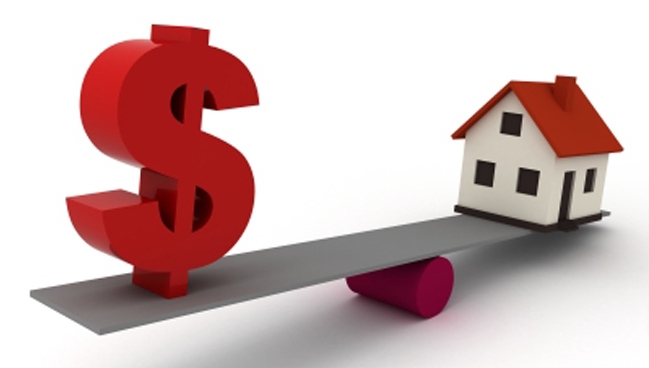One of the most successful, stable and long-term investments in the enterprise is funds that have been accrued due to depreciation of equipment. It is the depreciation processes that allow production to function continuously without disruption to the replacement of equipment.
Depreciation concept
Over the entire life of the fixed assets, the initial cost of which exceeds 100 MMORT, with a period of use of more than a year, they wear out both morally and physically. Therefore, by the end of its operational period, it no longer has the same value and cost as it was before.
In order to avoid significant one-time costs when purchasing new fixed assets, depreciation charges are introduced into the accounting policy of the enterprise, which are carried out throughout the entire period of use of the equipment and in total amount the cost of the newly acquired.

According to the Russian Legislation, allocation wear ratio a certain group of fixed assets is subject: structures and buildings, machinery, electronic computers, other equipment, vehicles, instruments for measuring quantities, other production equipment.
Non-depreciable fixed assets
However, it should be noted that depreciation as such does not apply to a certain group of fixed assets:
- any print media purchased at the time of the reporting period (magazines, books, leaflets, brochures, etc.);
- if the housing stock was privatized, and some objects were transferred to the owners free of charge, then in this case depreciation is not charged on them. This clause also applies to any fixed assets that have been allocated to the balance sheet of the enterprise as a result of a gift agreement;
- any funds that relate to forestry or road facilities, as well as being elements of external improvement of the adjacent territory of the building;
- any plants with a long lifespan that have not yet reached the proper age of exploitation;
- any livestock of productive varieties: oxen, buffalo and deer;
- objects of a specialized nature;
- areas that do not have variable properties over time.
The role of depreciation
Depreciation deductions play a large role not only for the economic component within a particular enterprise, but they also have a macroeconomic aspect of influence. So, from the state point of view, accounting and allocation of depreciation is nothing more than a continuous process of moving the value of fixed assets owned by the organization in direct investments in the production process. Thus, the amount of calculations for depreciation is directly proportional to the value of the gross national product.
Within the framework of one enterprise, it can be noted that annual depreciation deductions allow the business entity not only to purchase new equipment or inventory instead of decommissioned, but also to repair old and reconstruct accompanying technical support. In addition, the amounts of calculated wear are used to modernize the production line and expand the range of products.
Depreciation rates
According to Russian Legislation, the cost of depreciation deductions in the financial statements of an enterprise should be reflected at the end of the reporting period, and more specifically, every month. Moreover, the amount accepted on the balance sheet is calculated according to each group of fixed assets individually as a coefficient depending on the total share of the cost of funds.
Moreover, for each group there are fixed norms of depreciation deductions, which are shown in the table below.
| Group | Main | Special |
| 1 | 0,0065 | 0,0078 |
| 2 | 0,015 | 0,018 |
| 3 | 0,02 | 0,024 |
| 4 | 0,04 | 0,048 |
| 5 | 0,035 | 0,042 |
| 6 | 0,045 | 0,054 |
| 7 | 0,25 | 0,3 |
These indicators do not apply to those enterprises that, due to circumstances beyond their control, are forced to work in an aggressive environment. In addition, special depreciation rates also apply to those business entities whose production requires an increased shift frequency. For this organization, it is necessary to apply for permission to use special rules to tax authorities, while the residual value of depreciation is not subject to taxation.
However, if the company is in the liquidation phase, then from the moment this decision is made, any calculations for depreciation cease.
Features of accounting for depreciation
There are several ways to reflect depreciation amounts in accounting, which we will talk about later.

But at the same time, in the generally accepted principles of reflecting the business operations of a business entity, there are some general provisions that apply to any way of reflecting deductions:
- if during the initial acquisition of fixed assets there was a budget allocation, then in this case the amount is taken into account as the primary cost of the equipment or structures, minus the allocated subsidized funds;
- in the event of termination of ownership of any fund or in full repayment of the value of the object, the enterprise ceases to allocate depreciation amounts from the beginning of the month following the reporting month;
- if fixed assets are not involved in the production process in connection with modernization and reconstruction, then depreciation is not charged at the time of their suspension;
- The results of the main activity on the output of products do not affect depreciation rates in any way.
Linear wear method
The company has the right to independently decide how the amount of depreciation will be determined, while there is such a group of fixed assets to which the exclusively linear method applies. The selected accounting policy regarding depreciation should be applicable to all objects, while changing it over the entire life cycle is not possible according to the current legislation.
The linear method of calculation is quite simple in calculations and understanding, therefore, it is in great demand when choosing an accounting policy. Its essence lies in the fact that the annual amount of calculated depreciation depends directly on the independently determined life of the facility, its initial and final cost, as well as the norms according to the group to which these fixed assets belong.
Non-linear methods of accounting for wear
In addition to the linear method, it is possible to determine depreciation deductions in another way:
- relative to the volume of output (calculated depending on the planned annual volume of production, the actual amount of output for the reporting period and the initial value of fixed assets);
- depending on the operating life of the facility (this method is based on the ratio of the number of years that remains until the final useful life of a particular asset and the total life of the facility);
- relative to the residual value of the funds (in this case, the depreciation rate is determined depending on the life of the facilities or equipment, which is subsequently related to their current value).
Accelerated Depreciation Methods
An accelerated method of calculating depreciation applies to those objects useful life which exceeds three years, and which are included in the following list:
- any equipment designed to expand export operations;
- facilities aimed at the production of the latest goods that meet the framework of technological progress;
- fixed assets that are involved in the direct release of electronic computers.
Depreciation by the accelerated method allows the business entity to significantly reduce the time for the full renewal of those facilities that are most actively involved in the main process, which subsequently entails the allocation of individual funds for the reconstruction of equipment.
In addition, the accelerated method avoids obsolescence equipment, as well as reduce income tax according to the specifics of depreciation deductions.
Depreciation as an internal investment fund
According to the current legislation, funds from the accumulated fund can be included in assets in any way at the discretion of the enterprise: for the purchase of new equipment, intangible assets and the modernization of existing technical support.

Moreover, for a more efficient investment in future periods, it is recommended that the depreciation of fixed assets be distributed in accordance with a clearly established accounting policy.
Therefore, it is always necessary to maximally involve the funds received from equipment depreciation, so that they become the most successful investment in the portfolio of future incomes. But for this you should choose the most suitable method of depreciation accounting at the enterprise.








